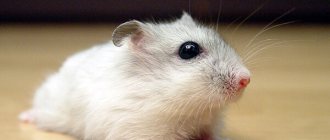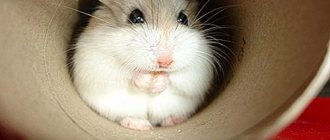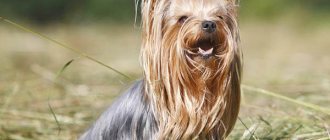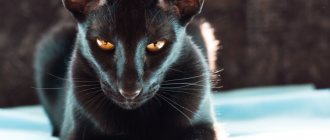Keeping Djungarian hamsters
Dzhungarik hamster photo
Hamsters, like babies, need thoughtful living conditions. Djungarians need special care, which is not difficult to provide. First, we determine the location for the cage. It should not stand on the floor or near an open window. A Djungarian hamster can get a serious cold.
By the way, a serious mistake is exposure to direct sunlight. The animal may overheat and die. But even if the cage is not in poor lighting, dampness is not conducive to normal life. Hamsters are nocturnal animals and too bright light during the day does not bring them pleasure. Since they are active at night, try not to place the cage in the bedroom.
Spreading
Djungarian hamsters have a fairly wide habitat. The species is found in natural conditions in southern Transbaikalia, Tuva, in the Aginskaya, Chuya and Minusinsk steppes, in Altai, and in the steppes of Western Siberia. In addition, representatives of the species are found in Northeast China and Mongolia.
Djungarians build their burrow houses in steppe or desert landscapes, much less often on the outskirts of the forest-steppe. These babies are not afraid of saline, sandy, gravelly soils. In Altai they are found at an altitude of up to 3 thousand meters above sea level.
Temperature for keeping hamsters
Ideally 17-20 °C. Air humidity 40 - 70 percent. High humidity negatively affects the heat exchange of living beings. Dry air is also dangerous - if the cage is located less than 2 meters from the battery. As a result, the animal may develop metabolic disorders.
A hygrometer will help keep the situation under control. Think about your pet in advance when ventilating the room so as not to leave him in a draft.
Before getting a hamster, you need to think about its needs in advance. The first thing you need to do is buy a suitable home for your future pet. Many people rely on the opinion of the seller at the pet store, but in vain. After all, the wrong choice not only threatens constant stress for the rodent, but can also lead to injury.
Cage for dzhungarika. Basic principles
Think about the size of your home. According to research, the pallet must be at least 50x30 cm. This is the minimum living space, despite the fact that the area of the floors is not taken into account. A small pallet leads to stress, to obesity, it can gnaw on the cell, and therefore live less than expected.
The cage for the dwarf should be low (dunes for rodents are also sold). A small second floor is allowed, but the third floor is clearly superfluous. The hamster may fall and hurt itself. The second floor should not be made of twigs so that the furry's legs do not fall through, otherwise injury is possible. In nature, Djungarian hamsters have long passages in their burrows, so you can buy a cage with a closed labyrinth.
Example of a suitable cell
Some owners place rodents in spacious aquariums - such housing has disadvantages. The main disadvantage is the risk of injury. If there are children in the house, the glass aquarium may break. This will cause injury not only to the hamster, but also to the children. Aquariums are not well ventilated, which results in a bad smell if not cleaned every week.
If you buy a cage secondhand, it must be disinfected and thoroughly washed. The rods are metal (distance no more than 1 cm) and not rusty. Using these tips, you will be able to choose a decent home for your future family member. The next task is to acquire all the hamster's necessities.
Features of care
These clean animals do not require special care. They wash themselves thoroughly and clean their fur with their paws. It is only important to change the litter and clean the cage once a week. Once a month you should wash the bottom of the cage with laundry soap. You can't bathe dzhungarikas, but sometimes they need to have sand baths. This procedure is usually carried out if the hamster's fur is dirty - it is matted and does not shine.
Pour some fine, clean sand into a container and place your hamster in it. He will happily wallow in the sand, cleaning his fur.
How long do Djungarian hamsters live?
In the wild, the Djungarian hamster can live 12 months, but domesticated individuals live longer. Of course, everything is individual, but there are approximate figures. If you comply with the requirements for the care and maintenance of a hamster, and protect it from stress (for example, forced communication with cats), then it will live on average 3 years. There have been cases when hamsters lived up to 4 years.
Appearance
Dwarf hamsters are no more than 10 cm long and weigh 40-50 g. The animal is covered with thick short fur. The natural color is the most common: the back is gray-brown, with a pronounced black stripe along the spine. The belly is light, the inside of the paws is also white. The eyes are black, convex, shiny.
Colors of Djungarian hamsters
dzhungarik tangerine color
The natural color is most common, but in nurseries, by selecting spectacular mutations based on the coat, it was possible to obtain unusual colors. Tangerine follows the natural pattern, but the fur is not dark, but light brown, red. The color “sapphire” is gray-blue.
The rarest is the “pearl”, the white Djungarian hamster. Pearl color is characterized by the loss of a dark stripe along the ridge. The Djungarian hamster is not black or albino. This color variation indicates that this is a Campbell and not a Sungurik.
dzhungarik pearl color
A pet of an unusual color requires a responsible attitude: a “colored” rodent is less resistant to adverse conditions and stress. Thus, red hamsters are carriers of the lethal gene, so individuals of the same color should not interbreed.
spotted jungarik
In the wild, dark Djungarian hamsters are subject to seasonal molting. They lighten: they turn white or gray, although the dark stripe on the back remains. In an apartment, this phenomenon is rare, because the temperature does not drop below 16 C, and the daylight hours are constant.
jungarik sapphire color
Conditions for keeping a hamster
Firstly, a drinking bowl, a feeding trough and a bathing basin . The drinking bowl must be special - with a metal ball. This is the most correct drinking bowl option. Change the water in the drinking bowl daily. The feeder can be made of different materials, but it is better to choose metal or ceramics. The plastic bowl is easy to turn over. You can make a bathing suit yourself using a bowl, the main thing is that it is comfortable to climb into, and that as little sand .
Secondly, you need to buy a house in which he will sleep and spend most of the day. It is important to know that Khomas like to stock up on large amounts of food in their huts, so buy a larger version. Pay attention to the window - it should be large or absent altogether, so that the fluffy does not get stuck in it when it grows up.
Hamster wheel. Is it necessary?
A hamster can run up to 9 kilometers in one night.
Don't forget about the wheel or running disc. This is a kind of cardio exercise machine for hamsters. In pet stores you can find small wheels consisting of rods, the distance between which is 5 mm. You should not buy such a wheel - a dzhungarik hamster can seriously damage its paw while running. The diameter of the wheel should be from 14 centimeters. You can buy a plastic or wooden wheel, but a metal one begins to creak over time.
A walking ball and a Djungarian hamster in it. Good or evil?
If you are concerned about the animals, then do not buy a hamster ball. In the cartoon "Volt" the hamster Rino was in a ball, but do not forget that this is a cartoon. A real animal will not like such a walk, because in a ball the hamster sees objects much worse due to the dull plastic. Poor visibility means it can crash into walls and other objects - no fun.
There is practically no ventilation in the ball, and there is a risk of overheating of the body. Such walks cause considerable stress to the animal, because the hamster actively just wants to get out of the confined space. There are countries planning to ban hamster balls. In Germany, balls are included in the list of animal products with a high risk of injury. So play it safe and keep your furry one in sight while you play.
Litter for rodents
An important point to consider is the filler. Corn filler is better suited, but it is not sold everywhere and is not cheap. As an alternative, use white napkins without dyes or fragrances. Wipes absorb moisture and odors less well, so they require replacement more often. But the hamster will like them, and he will be able to use them to insulate the house.
Corn filler
Is it possible for a dzhungarika to lay newspaper or sawdust as bedding? Newspaper should not be used - printing ink contains lead. Pine or cedar granules, pine sawdust carry a strong allergen for rodents, causing sneezing, rashes and even premature death.
Granular litter for cat litter is also not suitable, even non-coniferous ones. The hamster will simply rub his paws on these huge cobblestones. If you don’t want to spend money, you can wet the napkins (white), squeeze them with your hand into small granules and let them dry completely. Get a kind of analogue of corn filler with your own hands.
Hamster toilet
By nature, hamsters are clean animals: they take care of their fur and “wash themselves” when they wake up, so it’s not difficult to teach a hamster to go to a special toilet.
This hamster skill will allow you to clean the cage not every day, save time and reduce the unpleasant odor. And the Djungarian hamster will walk on dry bedding - which will protect it from colds.
How to toilet train a hamster
Buy a toilet with small sides at a pet store. Animals often choose the corner of the cage, so it is better to choose a corner toilet. The filler may come included; if not, choose the one you bought for regular bedding.
Keep the toilet away from the feeder. Djungarik will not walk into it right next to food.
Do not install a hamster litter box immediately after your hamster arrives. It's better to watch the animal for the first week or two. He can choose a convenient place on his own.
Hamsters go to the toilet in the corner, which is why corner toilets are popular
If your Djungarian hamster is sleeping or stocking up in the toilet, think about the reason for this behavior. Maybe he’s just not satisfied with an ordinary house. Perhaps it is too cramped or difficult to get to (if it is on the second floor, for example).
Do not demand instant submission from the fluffy and do not punish. You may need two toilets, because the hamster sometimes chooses two corners, everything is individual here. It may take several days for him to get used to the new object.
Natural enemies
In natural conditions, Djungarian hamsters have many enemies. They can become victims of wild animals:
- foxes;
- ferrets;
- wolves;
- wild dogs;
- lynxes;
- marten
Birds also pose a danger to the life of Djungarian hamsters:
- hawk;
- owl;
- falcon;
- ermine.
They have good hearing, which helps them hide from enemies in time. If a Djungarian hamster hears a quiet sound coming from afar, it immediately looks for where to hide. When the source of noise is very close and the opportunity to escape is missed, the hamster freezes in place to remain unnoticed.
If this does not help, he rises on his hind legs and begins to crackle threateningly.
With the help of a loud sound that resembles a crack, hamsters warn their relatives of danger, as well as that this territory is occupied.
Feeding of jungarians
Often, breeders choose ready-made mixtures in pet stores. A base of seeds and grains. The following grains are welcome: oats, wheat, barley, rye.
Nuts (except pine nuts and almonds) and seeds can be given rarely , as they contain a large amount of fat, and these little fluffies are prone to obesity.
Don't forget to give your hamster protein food. Insects are high in protein, so give your pet a treat a week. Crickets can be purchased at almost every pet store. From time to time, instead of insects, give a piece of egg white or a little yogurt (without dyes or flavorings).
Pumpkin, broccoli, cauliflower, zucchini, eggplant, cucumbers, bell peppers, bananas (rarely), wheat sprouts (oats, millet), green peas, parsley, dill, lettuce are suitable as delicacies .
Reproduction and offspring
Djungarian hamsters are very fertile. Since in their natural environment they have quite a lot of enemies, nature made sure that their species did not cease to exist.
Puberty occurs at the age of 4 months. The mating season for Djungarian hamsters begins in April-May and lasts until early October. During this time, the female can bring 3-5 litters. Each litter can have 5-12 cubs.
The duration of pregnancy is 20-21 days. Djungarian hamsters are born blind, bald and deaf, but grow very quickly. After a week, their bodies are covered with soft fur, and after 10 days their eyes open. By 4 weeks of age, babies become independent and can mate.
This is interesting! The female Djungarian hamster is ready to mate with the male the next day after giving birth. However, individuals kept at home are not recommended to be mated frequently. Pregnancy takes a lot of energy and depletes the female’s body. She needs time to recover.
Knowledge about Djungarian hamsters will help the owner of the animal to best arrange his home and organize food at home. This will allow the rodent to remain healthy and please its owner for a long time.











